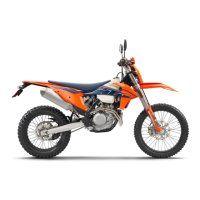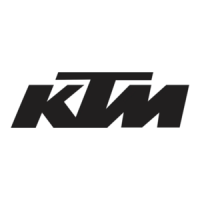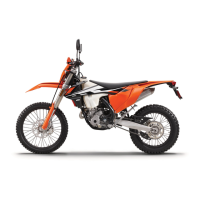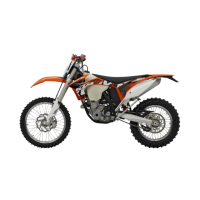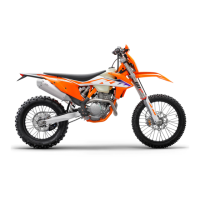
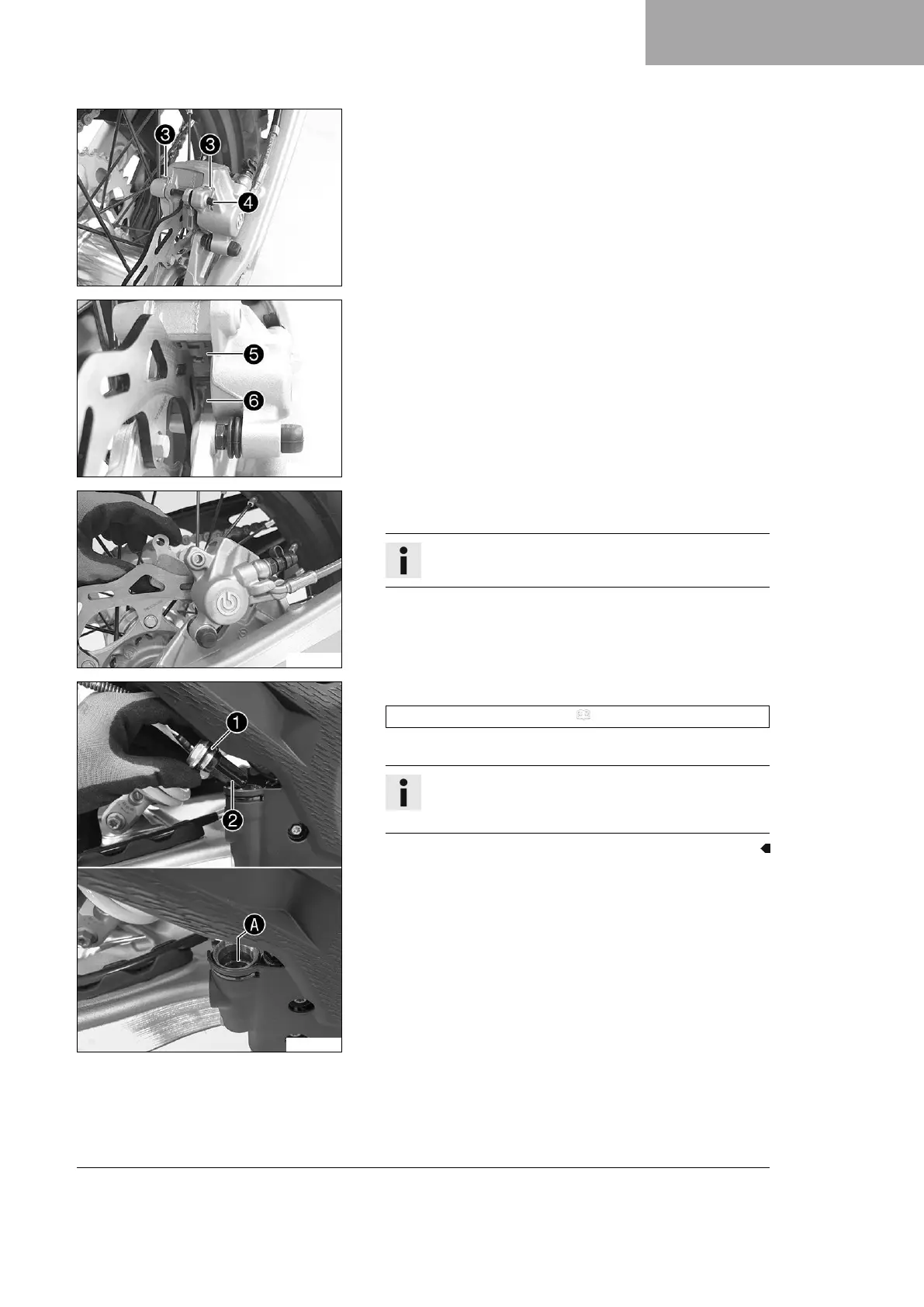 Loading...
Loading...
Do you have a question about the KTM 350 EXC-F 2023 and is the answer not in the manual?
| Displacement | 349.7 cm³ |
|---|---|
| Bore x Stroke | 88 mm x 57.5 mm |
| Starter | Electric starter |
| Transmission | 6-speed |
| Cooling | Liquid cooled |
| Clutch | Wet, DDS multi-disc clutch, Brembo hydraulics |
| Front Suspension | WP XPLOR-USD, Ø 48 mm |
| Seat Height | 960 mm |
| Engine Type | Single Cylinder, 4-Stroke |
| Frame | Central double-cradle type 25CrMo4 steel |
| Rear Suspension | WP XPLOR shock absorber |
| Front Brake | Disc brake, 260 mm |
| Rear Brake | Disc brake, 220 mm |
| ABS | Not equipped |
| Fuel System | Keihin EFI, throttle body 42 mm |
| Fuel Tank Capacity | 9.0 liters |
Explains symbols used in the manual for clarity and understanding.
Explains typographical formats used throughout the document.
Defines intended use and highlights dangers of misuse.
Provides safety instructions and explains risk levels and symbols.
Details vehicle labels and procedures for reporting safety defects.
Ensures safe operation and outlines consumer rights regarding warranty.
Details warranty conditions, exclusions, and service requirements.
Guidelines for fluids, spare parts, accessories, and service.
Identifies key components from front-left and rear-right views.
Locates the Vehicle Identification Number, Type Label, and Key Number.
Locates the Engine Number, Fork Part Number, and Shock Absorber Number.
Describes clutch, brake, throttle, horn, lights, turn signals, emergency OFF, start button.
Explains ignition lock, indicator lamps, and fuel tank filler cap.
Details idle speed, shift lever, foot brake, side stand, and steering lock.
Procedures for locking and unlocking the steering.
Overview, activation, and basic settings of the instrument cluster.
Various display modes, lap times, trip masters, and average speed.
Guidance for initial use and engine running-in procedures.
Battery performance, preparation for difficult conditions, and sand riding.
Essential checks before riding and engine starting procedures.
Gear shifting, braking techniques, parking, transporting, and refueling.
Notes and general information regarding the service schedule.
Lists maintenance tasks with intervals and recommended services.
Adjusting chassis for rider weight and basic fork settings.
Adjusting compression, rebound damping, and spring preload.
Measuring and adjusting static and riding sag.
Adjusting fork settings and handlebar position.
Lift stand operations and servicing of fork legs and protectors.
Removing/installing triple clamps, checking/adjusting steering head bearing.
Shock absorber, seat, air filter, and exhaust system service.
Fuel tank removal, chain maintenance, and chassis component checks.
Checking/adjusting hand brake lever and inspecting brake discs.
Checking/adding front brake fluid and checking/changing linings.
Checking/adjusting foot brake lever and rear brake fluid.
Checking and changing rear brake linings.
Procedures for removing and installing front and rear wheels.
Checking tire wear, damage, and inflation pressure.
Checking and adjusting spoke tension.
Removing, installing, and charging the 12V battery.
Fuse replacement, headlight bulb, and turn signal bulb replacement.
Replacing instrument battery and locating the diagnostic connector.
Checking antifreeze and coolant levels in the system.
Procedures for draining, refilling, and changing the coolant.
Checking and adjusting throttle cable play and response map.
Adjusting engine idle speed and shift lever position.
Changing the fuel screen and checking the engine oil level.
Procedure for changing engine oil, oil filter, and cleaning oil screen.
Procedure for adding engine oil to the correct level.
Steps and precautions for cleaning the motorcycle.
Checks and maintenance steps for vehicles used in winter.
Steps and recommendations for long-term motorcycle storage.
Steps for preparing the motorcycle after a storage period.
Table of common faults, possible causes, and actions.
Details on engine design, displacement, bore, stroke, and control.
Specifications for engine/chassis tightening torques and fluid capacities.
Details on chassis dimensions, electrical system, and tires.
Detailed specifications for fork and shock absorber components.
Specifications and recommendations for brake fluid, coolant, and engine oil.
Specifications for fork oil, shock absorber fluid, and fuel types.
Recommended cleaners, additives, and greases for maintenance.
Recommended sprays and protective materials for surfaces.
Explanation of the motorcycle oil standard.
Explanation of the oil viscosity classification standard.
Definition of the on-board diagnosis system.
Symbols indicating errors or warnings requiring intervention.
Symbols providing informational feedback.
